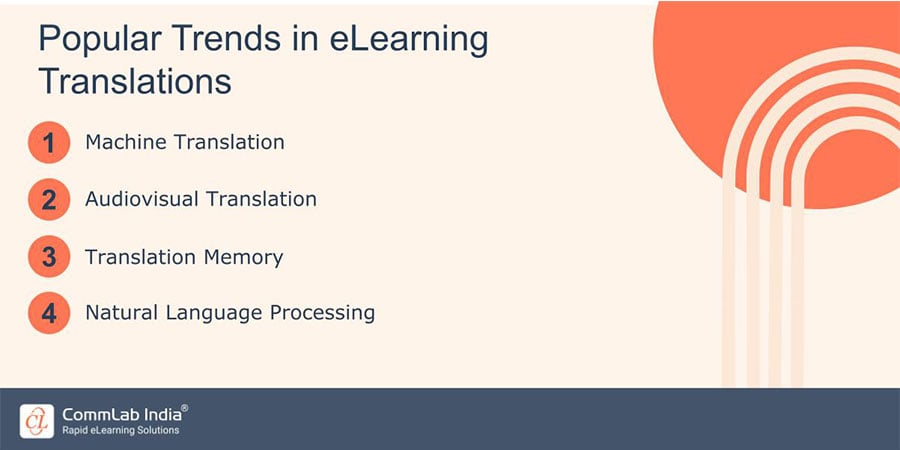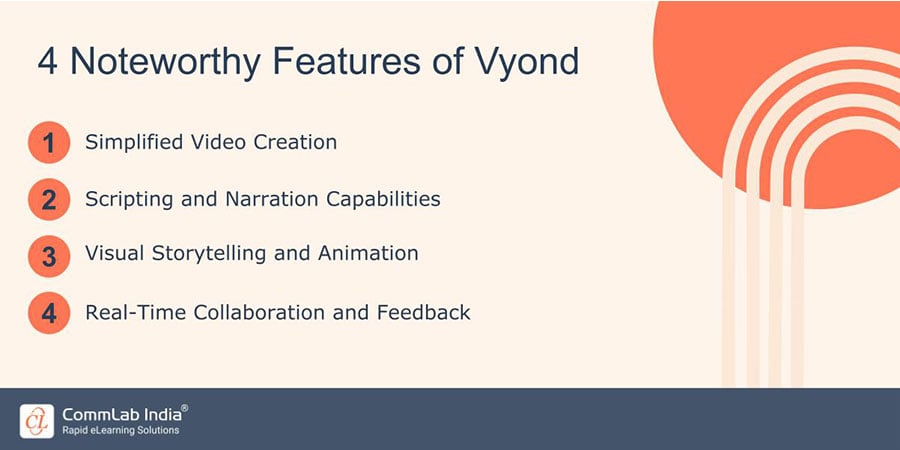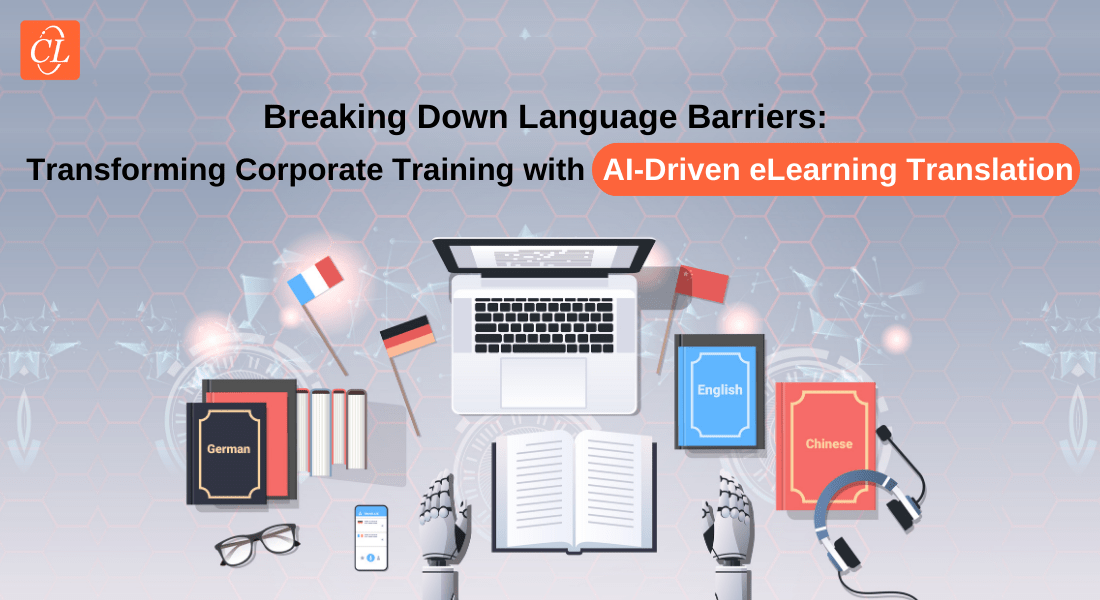Unraveling the Future of Corporate Training: 6 Trending AI Tools for eLearning Development
Embrace the AI revolution and unlock the full potential of eLearning development with the help of various trending AI tools for a brighter future of training.

In the dynamic realm of eLearning, staying ahead of the curve is essential for delivering impactful and engaging training experiences. Enter AI tools for eLearning development, a revolutionary approach that is transforming how training content is created, personalized, and optimized. In this blog, we delve into the innovative AI-powered tools that are reshaping the landscape of eLearning, equipping trainers and instructional designers with the means to enhance learning outcomes like never before.
AI Tools are Surely Magical for eLearning Development, Aren’t They?
Here are a few AI Tools that are trending in 2023 -
- ChatGPT
- Midjourney
- Canva
- ai
- DeepL
- Synthesia
Read on to explore how these tools help with various aspects of eLearning development.
6 AI Tools Trending for eLearning Development in 2023
1. ChatGPT
I don’t think it needs any introduction as of now, but still if you are somewhat unaware of the potential use cases of ChatGPT for eLearning development, allow me to help you out! From crafting engaging course content and interactive scenarios to tailoring adaptive learning paths, ChatGPT can be your ultimate partner in revolutionizing eLearning. With an uncanny ability to explain complex concepts simply and the creativity to inspire minds, it can transform mundane lessons into captivating experiences. Here are some of the things it can do to help you create effective and engaging eLearning content -
- Content Generation: It can generate text-based content for eLearning materials, including explanations, examples, case studies, and summaries. Whether you need course modules, lesson plans, or quizzes, it can create content tailored to your specific training objectives.
- Assessment and Quizzes: It can generate questions for quizzes, tests, and assessments, covering a wide range of topics and difficulty levels. You can use these to evaluate learners' understanding and track their progress.
- Language Proficiency: It can help learners improve their language skills by providing grammar explanations, eLearning translations, vocabulary lists, and even engaging writing prompts. For technical courses, it can explain coding concepts, algorithms, and other complex topics and languages in a clear and concise manner.
- Interactive Scenarios: It can assist in designing interactive scenarios that simulate real-life situations, helping learners apply theoretical knowledge to practical scenarios. It can suggest images, diagrams, and other visual aids to enhance the visual appeal and understanding of your content.
2. Midjourney
Midjourney is an AI tool that uses diffusion models to generate images, videos, and text. This can be a helpful tool for creating visually appealing and engaging content for eLearning. Midjourney can be used to create realistic and engaging images that can be used to illustrate eLearning content. For example, a company could use Midjourney to create an interactive training module on product safety that includes realistic images of dangerous situations. This could help to train employees to identify and avoid hazards in the workplace.
Midjourney can be used to create interactive content that allows learners to interact with the images and videos and to personalize content for different learners. To generate content with Midjourney, you first need to provide a prompt. This is a short text description of the content you want to generate. The more specific you are with your prompts, the more likely Midjourney is to generate content that is relevant to your needs.
→ Access Recording Now: ChatGPT and Rapid eLearning Accelerators
3. Canva
Canva is a popular design tool that can be used to create a variety of visual content, including eLearning materials. The AI-powered features offered by Canva can help to save time and effort for eLearning developers, and they can also help to create more accessible content. Here are a few notable ones -
- Automatic text generation: Canva can automatically generate text for eLearning content, such as titles, subtitles, and body text. This can save time for eLearning developers who don't have the time or expertise to write their own content. For example, you could create different versions of a course for different learning styles.
- Image recognition: Canva can recognize images and extract text from them. This can be helpful for eLearning developers who want to add captions to images or create interactive content that allows learners to interact with images. For example, you could create an interactive quiz where learners have to identify different objects in an image.
- Accessibility features: Canva offers a number of accessibility features that can help to make eLearning content more accessible to learners with disabilities. These features include text-to-speech, closed captions, and color contrast adjustments.
4. Openelms.ai
Openelms.ai is an AI-powered LMS (Learning Management Systems) platform that can be used to create eLearning courses quickly and easily. It uses natural language processing and machine learning to generate the content, images, and animations for the course. This can save eLearning developers a significant amount of time and effort. Openelms.ai can generate a complete eLearning course from a single line of text. This can save eLearning developers a significant amount of time and effort. It can personalize courses for different learners. This can be done by adjusting the content, images, and animations to match the learner's interests and learning style.
Openelms.ai is a subscription-based platform, so you only pay for the features that you need. This can save you money compared to traditional eLearning development methods. It can be scaled to meet the needs of any organization. This means that you can create as many courses as you need without having to worry about capacity constraints. Openelms.ai is a user-friendly platform that can be used by anyone, regardless of their technical skills so you don't need to hire a dedicated eLearning developer to create your courses.
5. DeepL
DeepL is a neural machine translation (NMT) tool that can be used to translate text from one language to another. It produces translations that sound natural and fluent, which is important for eLearning content that needs to be engaging and easy to understand. DeepL is known for its high accuracy, which is important for eLearning content that needs to be translated accurately. It can save time and money by automating the eLearning translation process. This can be especially helpful for organizations that need to translate a lot of eLearning content into multiple languages.

6. Synthesia
Synthesia is a text-to-speech (TTS) software tool that can be used to create realistic-sounding voiceovers and AI videos for eLearning courses. It uses a powerful AI engine to generate realistic lip movements that match the audio, making the voiceovers look and sound incredibly lifelike. Synthesia offers a variety of languages to choose from, and the voiceovers are automatically translated to match the language of the course. It also offers a variety of features to customize the audio pitch, speed, and tone along with various options to improve the quality of the voiceovers, such as noise reduction and automatic volume leveling.
Honorable Mentions
1. Duolingo
Duolingo is a popular language learning platform that can be used to create gamified eLearning courses. It uses AI to personalize lessons and provide real-time feedback. It's a great example of how AI can be used to make eLearning more engaging and effective.
2. 360Learning
360Learning is an online learning platform that offers a variety of features to help with eLearning development, such as content authoring, assessment, analytics, and course management powered by AI content recommendations.
3. Vyond
Vyond is a cloud-based animation platform that can be used to create animated eLearning courses. Vyond offers a library of characters, scenes, and audios that can be used to match the training needs and create engaging animated eLearning courses in a few clicks.

4. Kahoot
Kahoot! is a game-based learning platform that can be used to create interactive quizzes and surveys for eLearning courses. Kahoot! maintains leaderboards that rank learners based on their performance on quizzes and surveys. This can provide learners with additional motivation to participate.
Wrapping Up!
Incorporating AI-powered tools into corporate training represents a paradigm shift in how organizations approach employee development. These tools not only streamline the training process but also elevate its impact by delivering personalized, engaging, and data-backed learning experiences. While we have discussed enough about ChatGPT above, it's a tool that has enormous potential, and to help you understand more of its use cases for eLearning development, here’s a free webinar recording to check out to stay ahead of your competition.





